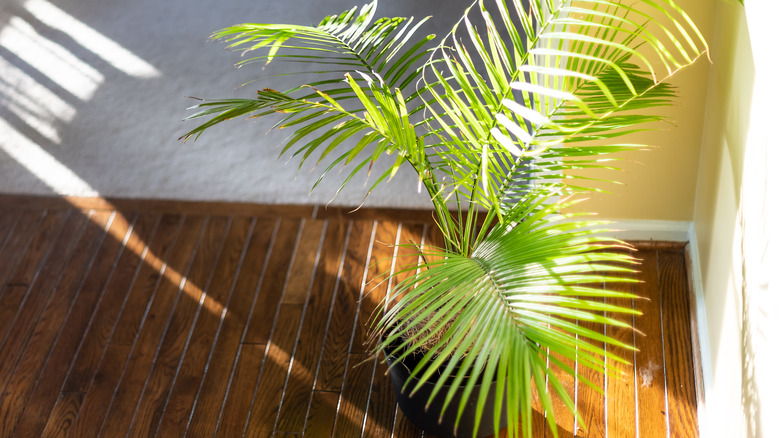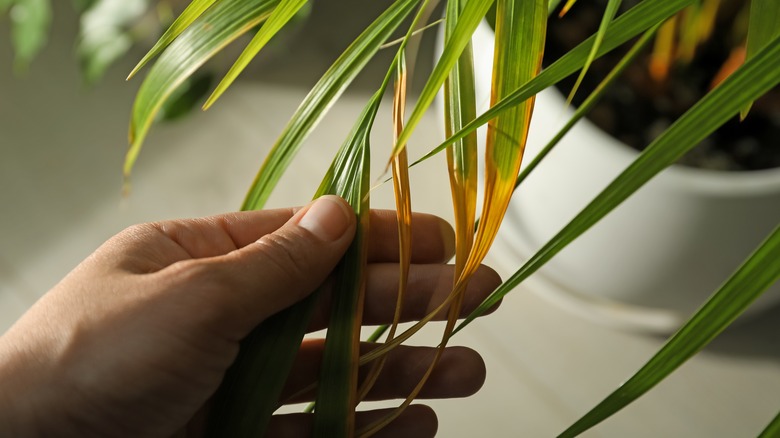The Major Downside Of Growing Palm Trees Indoors
One of the easiest ways to spruce up your home is by incorporating plants in your interior décor, and palm trees bring the green while also giving a nod to the tropics. However, one of the major downsides to having one indoors is that, come pollen season, people with allergies won't be able to stand them. Palms are related to grasses, so if you are allergic to grass pollen, palm pollen may affect you as well.
A simple solution is to buy female palm trees instead. Only the males produce pollen, so that would knock any potential pollen problem right off the list of worries. If for some reason you insist on owning male trees, perhaps for reproductive purposes, you'll want to leave the male plant outside in the garden unless you want to throw it away every reproductive season.
Unfortunately, pollen production is just one issue that can arise from having a palm tree inside your house. Other downsides involve their particular requirements and other features. To manage an indoor palm tree successfully means making sure you know what you're committing to.
Growing palms indoors has other downsides
Growing potted palm trees inside your house means that you have to compensate for the fact that the trees aren't growing outside. This inevitably means less sunlight and limited soil space and capacity. Palm trees love basking in full sun. That doesn't mean that they can't thrive in the shade, but a study on mountain cabbage palms found that trees grown in full sun were twice as tall as those grown in shade. Shorter is better for indoor palms anyway since you don't want them to overgrow, but they still need to be situated near a window that receives constant sunlight.
Soil is a more delicate matter. Palm trees need well-drained, hydrated soil, but overwatering them could cause root rot. In a pot, this can easily become a problem, which is why you need an adequate number of drainage holes at the bottom. Once you notice the soil is dry, water it. Apply compost to the plant to help maintain surface moisture.
Space is also an issue. Palm trees can grow tall and wide with boisterous fronds, which is a problem if you don't have a large room to match. Pruning the tree to control its height is not a good idea. Because palms are monocotyledons, they grow only from the top, and pruning should be limited to the dead fronds.
Get cultivars that fit your criteria
As long as their needs are met, palm trees can be low-maintenance plants that can adapt favorably to a lot of environments. Still, as you scour plant nurseries and online shops for the perfect variety of female palms to grace your home, you can opt for one that thrives in otherwise palm-unfriendly conditions like low sunlight and infrequent watering. The Kentia palm (Howea forsteriana) is known for its ability to grow well under low sunlight, a trait that makes it one of the most common houseplants around. They also thrive in cooler temperatures, making them ideal if you're addicted to your air conditioning.
If you foresee yourself forgetting to water your plant or being away from home for a couple of weeks at a time, then the ponytail palm (Beaucarnea recurvata) is right for you. This plant, which is actually a succulent, has a literal reservoir of water at the base of its swollen trunk which keeps it hydrated for longer. A drought-tolerant plant, the ponytail palm calls for watering only about every two to three weeks. For a palm tree that won't overgrow its environment, the parlor palm (Chamaedorea elegans) grows up to around 4 feet when potted.


